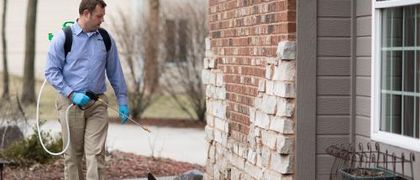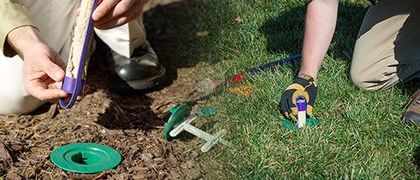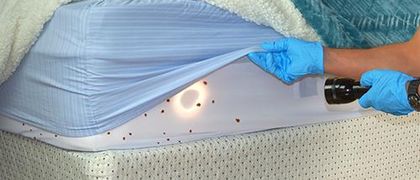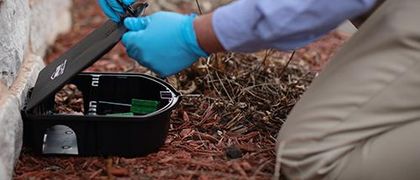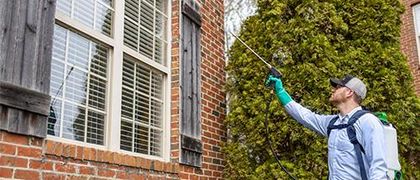Brown Recluse Spiders in Iowa: Identification & Control
Brown recluse spiders aren’t your typical backyard spider in Iowa. While they aren't as common here as they are in Missouri or southern Illinois, sightings do happen, especially in central and southern parts of the state. And when they show up, they can be a big concern for homeowners.
In this article, we’ll cover how to identify brown recluse spiders in Iowa homes and explain the most effective control methods, particularly for folks in Des Moines and nearby areas.
Key Takeaways
- Brown recluse spiders are sometimes found in Iowa homes and prefer hiding in attics, basements, and garages.
- A violin-shaped mark, six eyes in pairs, and plain brown coloring help identify a brown recluse spider.
- Brown recluse spider bites are rare and usually harmless, but can sometimes cause skin problems that need medical attention.
- Spider problems are best handled with expert inspections, sealing entry points, clutter removal, and follow-up visits.
What Do Brown Recluse Spiders Look Like?

Brown recluse spiders are one of the few dangerous spiders found in North America. They’re most often reported in the warmer Midwest, like Missouri and Indiana, but they have made their way into Iowa homes.
These arachnids have a reputation for their bite, which can cause lesions and necrosis in rare cases. While their bite sounds scary, most bites don’t need medical treatment, though some can cause serious skin issues.
When it comes to infestations, they’re manageable once you know what you’re dealing with. Now let’s look at how you can identify one in your home.
Violin-Shaped Marking
This is the feature that gives them their nickname, "fiddleback spider."
Brown recluses have a distinct violin-shaped marking on the top side of their cephalothorax (the fused head and body section).
In Iowa, many common spiders get mistaken for brown recluses, like the wolf spider or sac spider, but they lack this clear violin shape.
If you see a spider with this marking, it's worth getting a second opinion before jumping to conclusions, especially since accurate ID is key to determining if pest control is necessary.
Uniform Color and Lack of Patterns
Adult brown recluses are uniformly light to dark brown with no bold stripes, bands, or dots. That sets them apart from other types of spiders found in Iowa homes, like the dark-legged sac spider, which tends to have a more patchy or patterned look.
This even coloring makes them harder to spot in dim areas like attics and crawl spaces.
Six Eyes in Pairs
Unlike most spiders, which have eight eyes arranged in rows, brown recluses have six eyes arranged in three pairs. It’s not something you'll easily see without magnification, but it’s a dead giveaway if you’re trying to confirm a sighting.
This unique feature is often used by entomologists at Iowa State University or pest experts to distinguish them from look-alikes.
Preference for Undisturbed Areas
Brown recluses prefer hidden, quiet spots.
In Iowa homes, they often settle into cardboard boxes in the basement, clutter in the garage, or behind furniture in seldom-used rooms.
That’s why decluttering these areas is one of the first steps we recommend during an inspection.
Egg Sacs and Webs
Their webs are small, irregular, and used more for shelter than catching prey. They usually spin these webs close to the ground in dark corners. Their egg sacs are white, round, and about the size of a dime.
Spotting these in your home, especially in central Iowa, is a sign you may have a developing infestation.
How to Control Brown Recluse Infestations in Iowa

Brown recluse spiders are resilient, but with the right strategy, they can be removed and prevented. Here’s how we handle them here at Miller Pest & Termite.
Schedule a Professional Inspection
If you suspect you’ve found a brown recluse, don't wait.
Because the spider is so often misidentified, having a pest control expert examine the situation is the best way to get peace of mind. We’ve inspected hundreds of homes across Des Moines and nearby cities for spiders like these.
An inspection will determine whether the problem is an isolated sighting or a sign of a bigger infestation, and whether it’s a brown recluse or something less serious.
Clean and Declutter Undisturbed Areas
One of the simplest things you can do is reduce the places where these spiders hide. Focus on basements, attics, and garages, anywhere that tends to collect boxes or storage bins.
Use plastic totes instead of cardboard, vacuum regularly, and seal items you’re not using. In Iowa homes, clutter often builds up during the winter and spring, so late spring and summer are good times for a deep clean.
Seal up Entry Points
Like most arachnids, brown recluse spiders slip in through gaps in doors, vents, and windows. Sealing cracks and openings around your home, especially at ground level, helps keep them outside.
This is important for older homes in central Iowa or houses with unfinished basements.
Use Targeted Treatments
When it comes to spider problems, DIY sprays usually won’t cut it, especially for elusive spiders like the brown recluse. At Miller Pest & Termite, we use targeted, home-safe treatments that are placed in likely hiding spots and paths.
Our team of exterminators follows a 33-point protection program that includes treatment around baseboards, inside voids, and other high-risk areas.
Ongoing Monitoring and Follow-Ups
Brown recluse spiders don’t disappear overnight.
That’s why we offer routine follow-ups and ongoing pest control plans tailored to Iowa’s climate and seasonal spider activity.
Our Miller Guard and Miller GuardPlus plans include coverage for both venomous and non-venomous spiders, so you’ll be protected year-round without the guesswork.
If you’re unsure whether that spider is harmless or not, our team is here to help.
Schedule your inspection today and let our experts give you peace of mind.
Get Help Now!

